GovContact
Introduction
Overview
Solution
Meet Your Representatives
Learn about all your representatives in one place. Find their contact information and where they stand on the issues.
Play
Political Feed For Your Reps
Stay updated through social media from representatives, bills on the docket, and petitions from activists.
Play
Message Within GovContact
Allow citizens to send messages through email, voice, or video recordings. Each message is sent as an email embedded with the media a citizen wants to share.
Play
Research and Discovery
Focus Group with Citizens
Rationale: Hitting the ground running, I arranged a focus group with citizens to receive a large amount of qualitative insights in a short amount of time.
"It would be nice to have all my representatives' information in one place on my phone ... like having my Senator's phone number in my Contacts"
– Emily
Key Insight: Citizens would spend most of their time researching who their representatives are and what they stand for .
Product Goal: Have a single place for citizens to learn about their government representatives and how to contact them.
Interviews with Representative Offices
Rationale: After the focus group, I wanted to understand how a message reaches a rep. I contacted my own reps' offices and conducted surveys on how a citizen could best get their voice heard.
Representative employees answer citizen reports rather than representatives themselves. Employees relay messages and create summary reports.
Key Insight: Talking to government offices showed that frequent and clear communication is important to affect real change.
Product Goal: Encourage communication with a representative office often and help citizens with what to say.
Competitive Analysis into Civic Engagement Apps
Rationale: Analysis into existing civic engagement apps apps provided inspiration into what works and what could be improved.
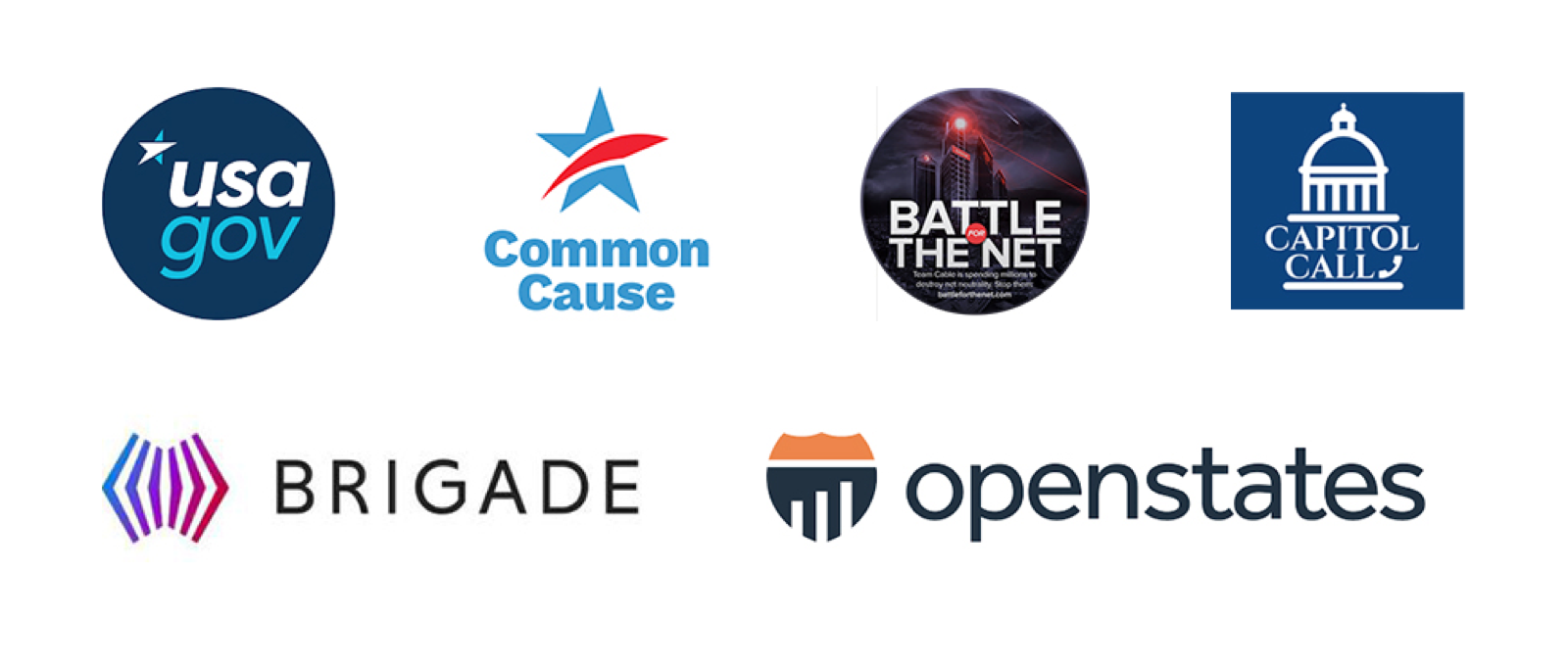
Key Insight: Other products had different ways to inform users about representative actions. For example, Open States and Capitol Call was to see bills that representatives had written
Product Goal: Keep citizens informed with what representatives are actually doing while in office.
design process
Design Iteration
There were four iterations of design and testing to get towards the final solution. At each stage, I incorporated feedback from users and mentors. Testing consisted of citizens using a prototype in an interview format and answering followup questions. Mentors provided more formal critique. A few of the iterations are shown below.

Representative Cards
Cycle through individual cards to meet reps and learn how to contact them.
Rationale
Based on the focus group, the main problem to solve was consolidating representatives’ info in one place.
Feedback
If only contact info is present, it’s nicer to have them laid out one screen rather than cycling through one by one.
0% of participants thought they would need more contact information (office address, rss feed)
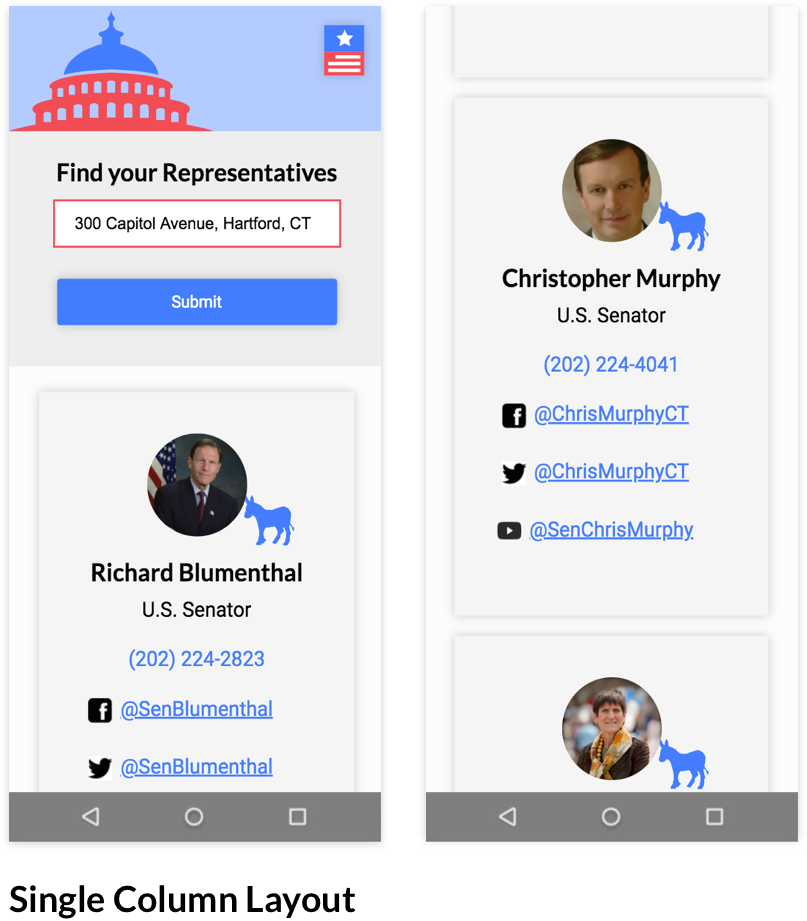
Single Column Layout
See representative information on a single screen. Easy to scroll through and meet all representatives.
Rationale
Feedback from first user test showed that citizens wanted to be able to meet their representatives faster.
Focus Group and Online Research demonstrated how citizens should know where representatives stand on the issues.
Feedback
Citizens needed more information on representatives’ political stance.
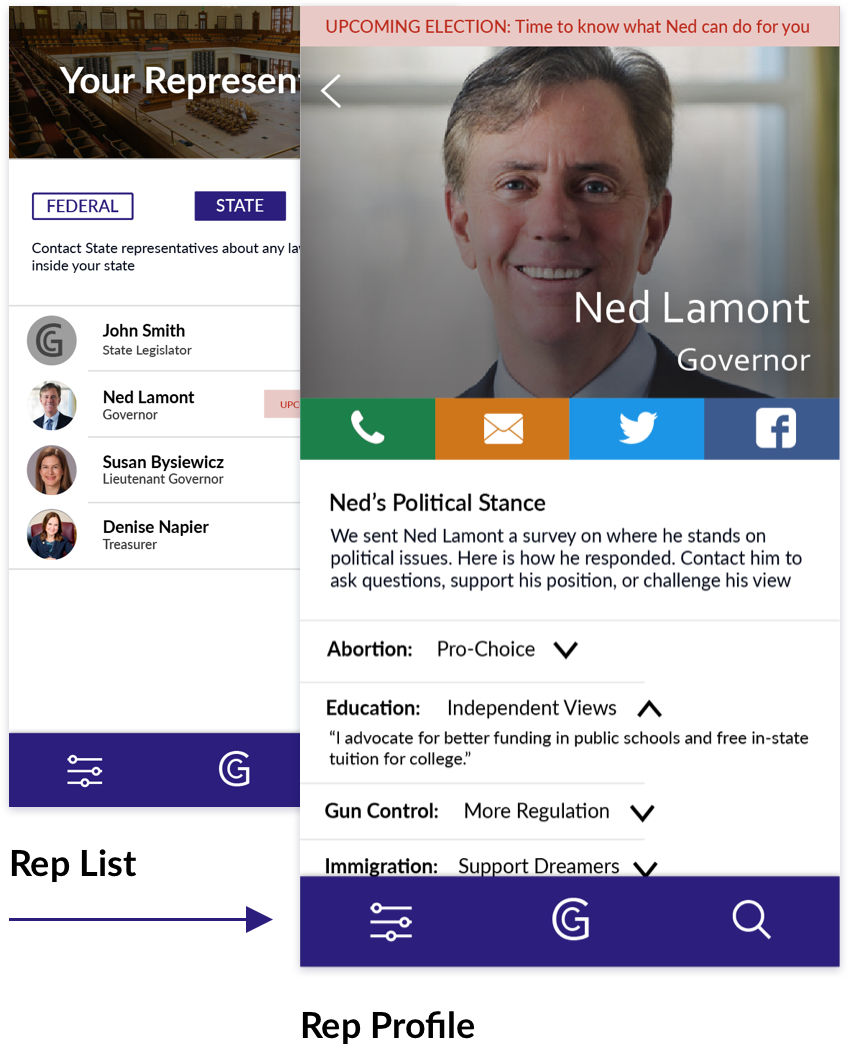
Representative Profiles
Profiles contain both contact info and individualized information about political stance.
Rationale
Previous user test showed citizens needed to know more about a political stance than political party. Rep Profiles ignore political party and look at how each rep has supported the issues.
Pulled away from a single page layout to chunk more appropriate information.
Feedback
Citizens would want to stay updated with what representatives are up to on a daily basis as well as message reps inside GovContact.
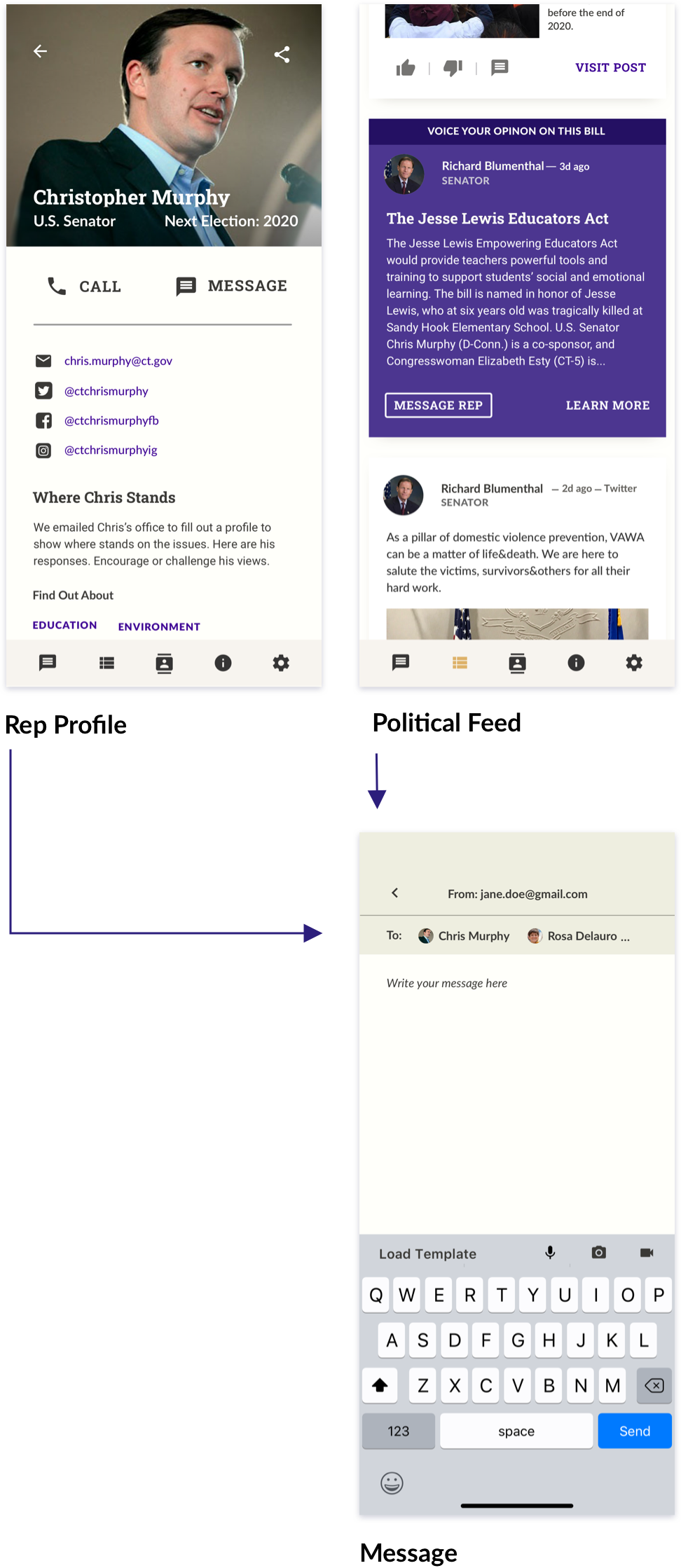
Adding Political Feed and Messaging
Political Feed scrapes social media, petitions, and legislation to inform and prompt citizens to act. Citizens can use in-app messaging to send text, voice, and video.
Rationale
Expanded feature from Open States and Capitol Call to see representatives' bills to include all of their activities.
Online Research and Focus Group showed that citizens need to trust information source. Political Feed relies on primary sources rather than news outlets.
Previous user test showed that citizens would also want to message reps within the app.
Feedback
Engagements from social media, petitions, and bills could be sent to reps as a summary report to be used to understand citizens’ opinions.
Closer Look at Final Solution
After the full design evolution, here is what I landed on. Each feature aims to tackle on the goals established at the research and discovery stage.
Representative Profile
Hypothesis: Consolidating representatives in a single place will help citizens learn about representatives' contact info and political stance.
Success Metrics: Representative Profile Views, number of Quick Links tapped, views on each political stance, number of engagements (taps, video views, etc) with media in profile
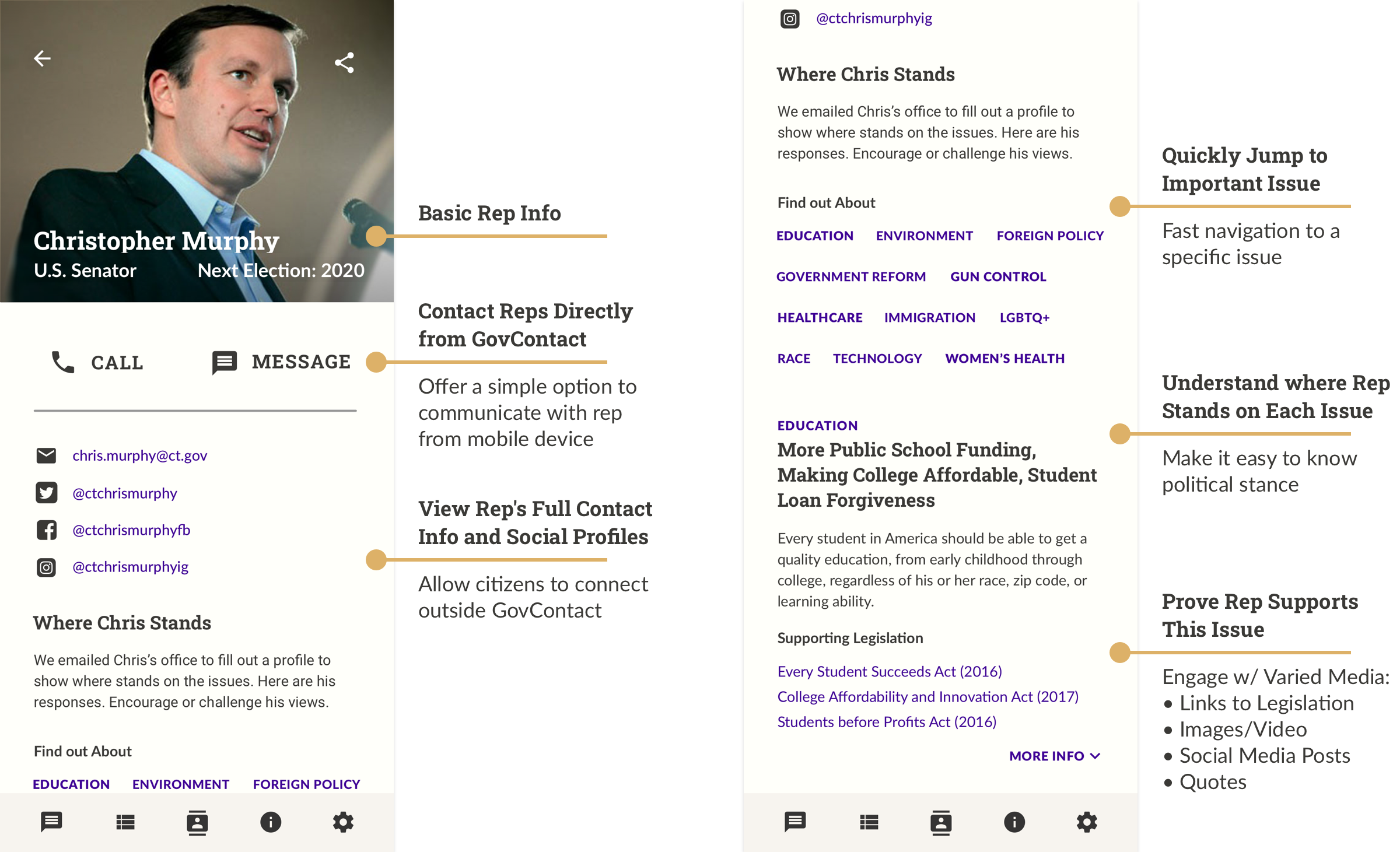
Representative Feed
Hypothesis: Having a space to update citizens with representative social media, proposed bills, and activist petitions will help citizens stay engaged in the political process.
Success Metrics: Visits on Political Feed, number of views on each post, number of engagements with social media, number of messages started from Political Feed, number of petitions signed.
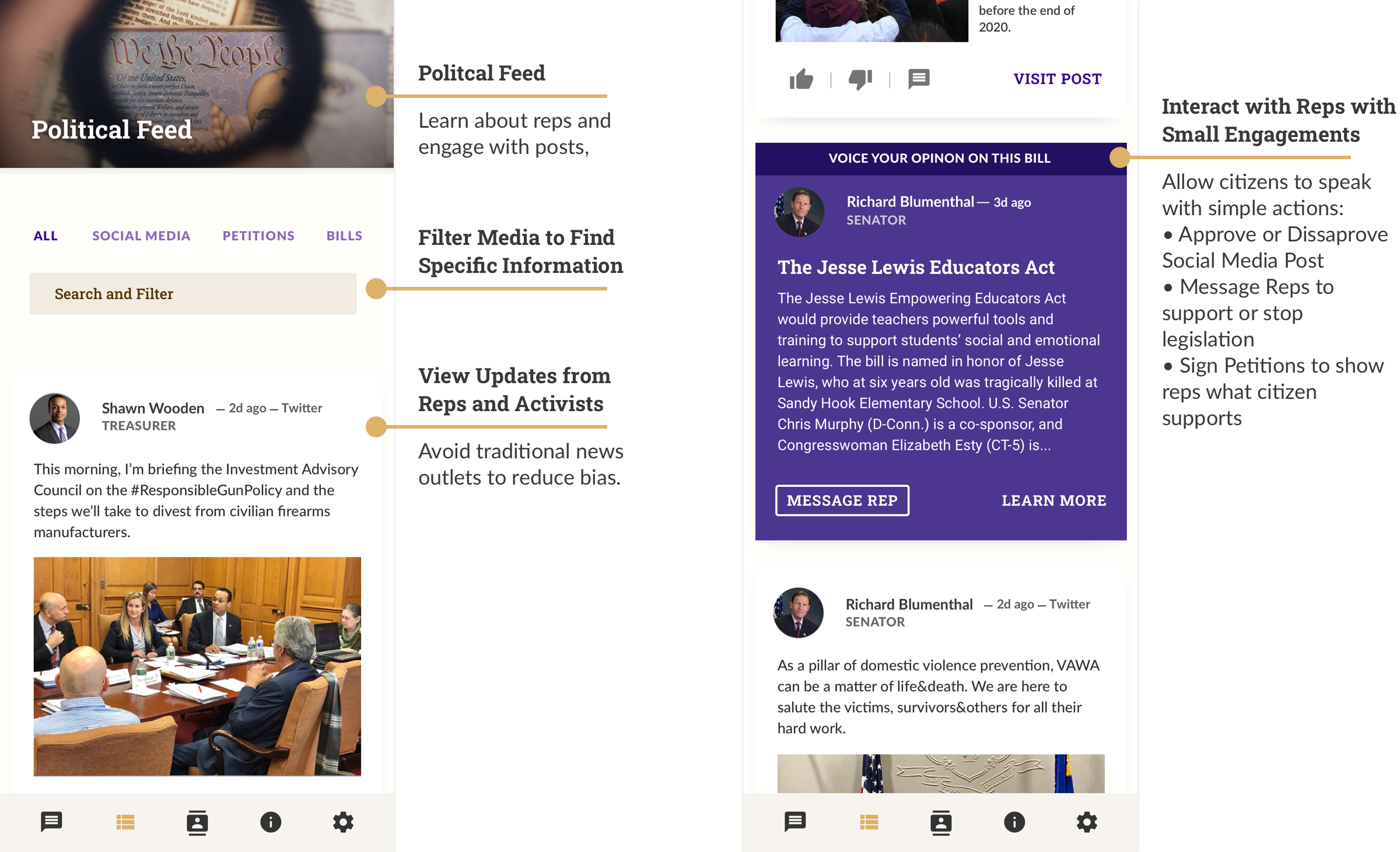
Visual Design Language
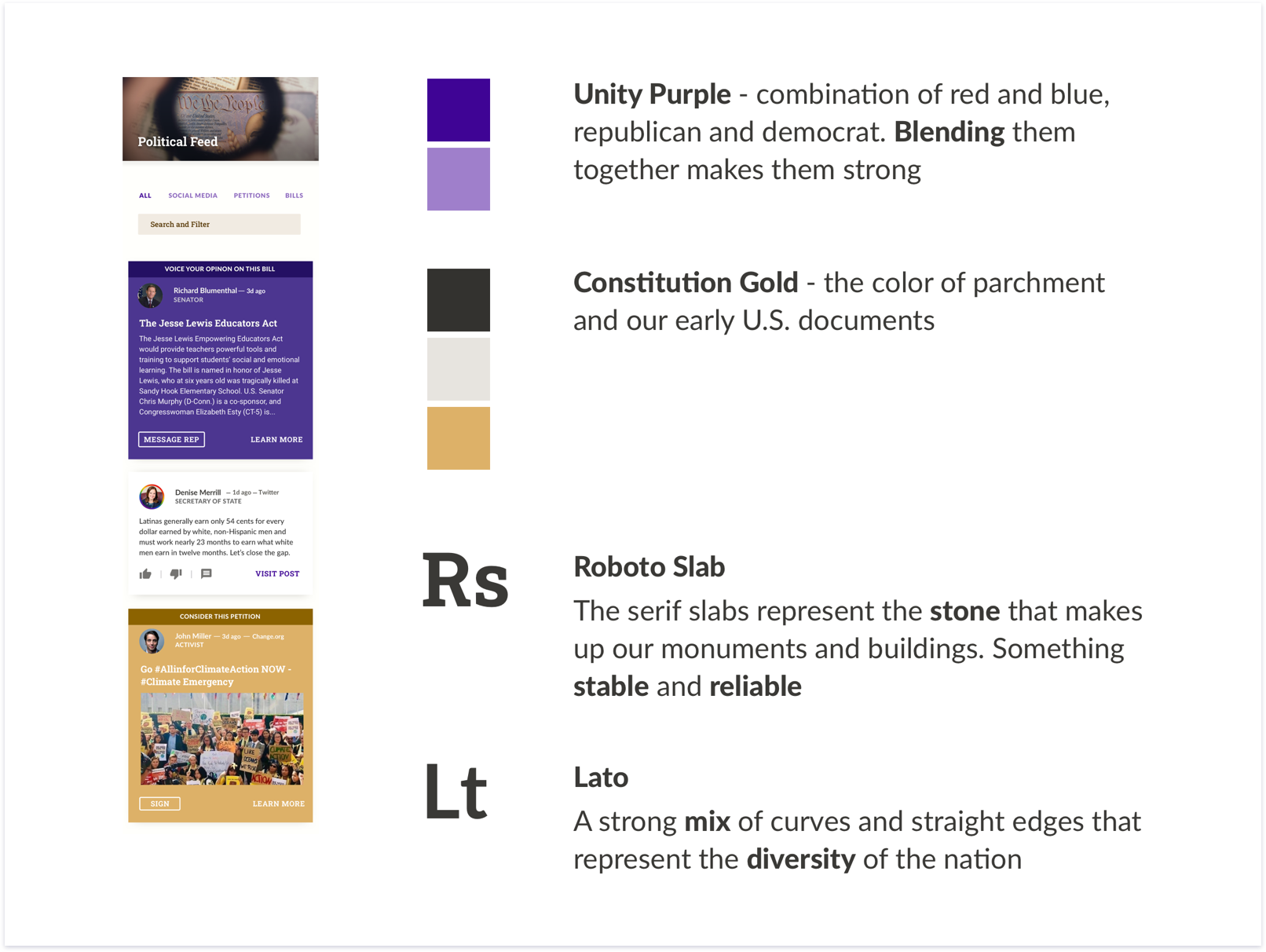
conclusion
Results
Final Invision Prototype
The final deliverable for this project was an InVision Prototype to highlight the interactions and flows for contacting government representatives.
Visit Final PrototypeFinal Feedback
- "It's nice how each political stance on a profile has laws, social media, and evidence. There's more validity to what the politician is stating."– Ellen
- "I really enjoying being able to sign petitions and send messsages to my representative inside the app ... It's a single place where I can engage with my representative" – Steven
Challenges and Lessons
Incorporating Different Forms of Research
This was one of the most research-heavy projects I encountered. Civic engagement is a complicated issue that I had to learn about before I could start designing for it. The most effective forms of research were the focus group and government employee interviews. Talking to real people helped me develop a greater sense of empathy of what people needed in a civic engagment app.
Consider Visual Design Early On
To develop a richer visual language, I started the process early. The goal was to make each design choice have a meaning, which would require a longer period of time to develop.
Next Steps
Compare Reps Across Issues
Instead of learning about representatives individually, an interesting feature would be to compare all your representative stances based on a political issue.
Message History
One the features that would be needed is an inbox feature that citizens could use to keep track of where their messages ended up and if they received a response. Currently GovContact would send an email to citizens that they could continue further correspondence.